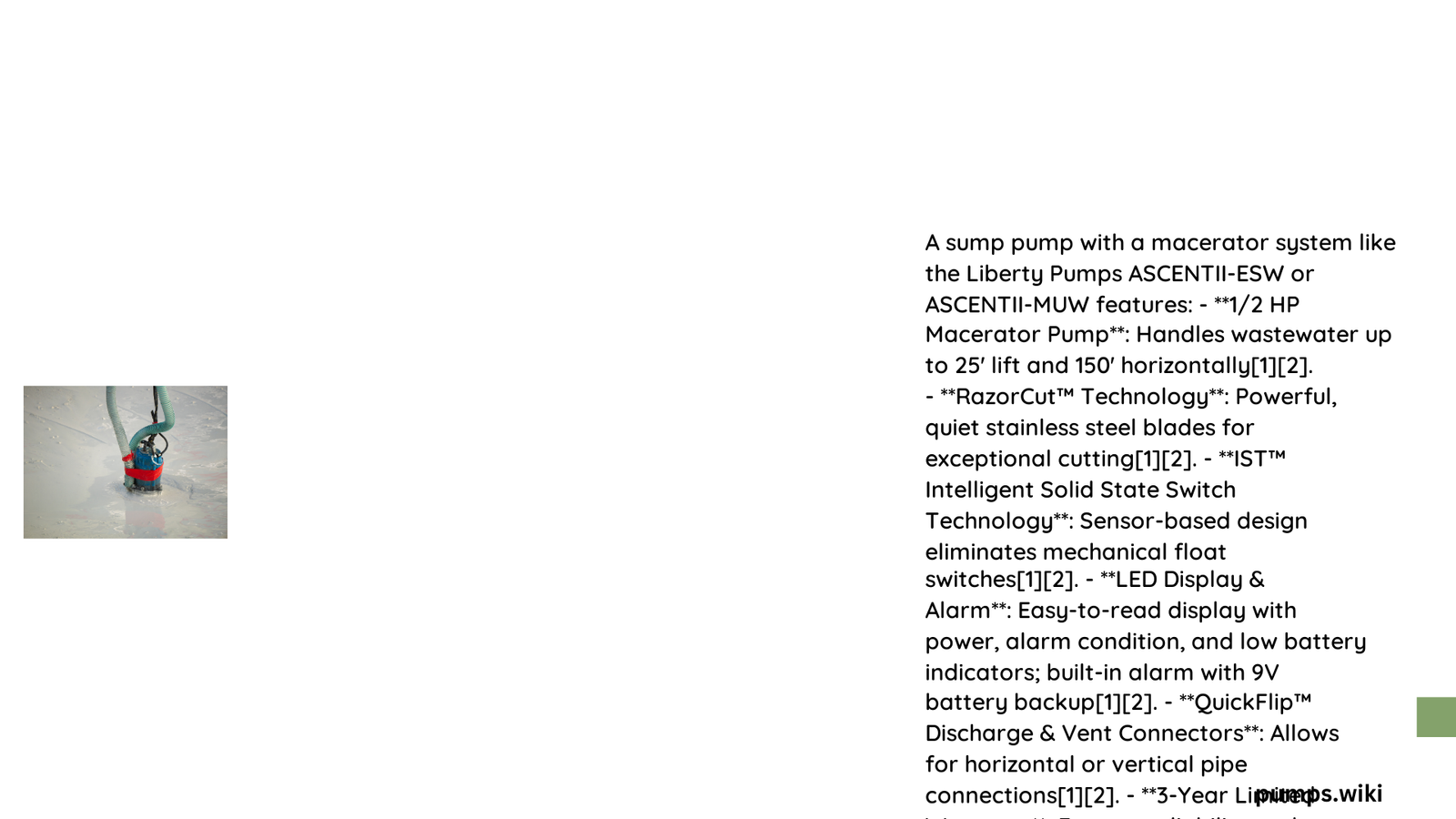A sump pump with macerator represents an advanced wastewater management solution designed to efficiently handle and transport sewage and wastewater from below-grade locations. These innovative systems combine powerful grinding mechanisms with robust pumping capabilities, enabling homeowners and professionals to overcome challenging drainage scenarios in basements, bathrooms, and other hard-to-drain areas. By mechanically breaking down waste and effectively moving it through narrow pipes, sump pumps with macerators provide a reliable alternative to traditional gravity-based drainage systems.
What Makes Sump Pump with Macerator Unique?
Sump pumps with macerators offer several distinctive advantages over conventional drainage solutions:
Key Performance Characteristics
- High-Efficiency Grinding: Capable of breaking down solid waste into fine particles
- Versatile Installation: Suitable for multiple residential and commercial applications
- Extended Pumping Range: Can transport wastewater vertically and horizontally
Technical Specifications Overview
| Model | Horsepower | Voltage | Max Vertical Lift | Discharge Rate |
|---|---|---|---|---|
| Liberty ASCENTII-RSW | 0.5 HP | 120V | 25 feet | 2400 GPH |
| Saniplus | 0.5 HP | 120V | 30 feet | 27 GPM |
How Do Sump Pumps with Macerators Work?

Sump pumps with macerators operate through a sophisticated multi-step process:
- Waste Collection: Accumulate wastewater in a holding tank
- Grinding Mechanism: Powerful blades fragment solid waste into fine particles
- Pressure Pumping: Propel liquefied waste through narrow discharge pipes
- Automatic Activation: Triggered by water level sensors
What Are the Primary Installation Considerations?
Essential Pre-Installation Checklist
- Verify local plumbing codes
- Assess drainage requirements
- Prepare necessary tools and materials
- Ensure proper electrical connections
Recommended Tools
- Pipe wrench
- Drill and bits
- Teflon tape
- Level
- Measuring tape
What Potential Challenges Might Users Encounter?
Common Troubleshooting Scenarios
- Blockages: Regular maintenance prevents debris accumulation
- Electrical Issues: Check power connections and voltage compatibility
- Noise Concerns: Proper installation minimizes operational sounds
How to Maintain Your Sump Pump with Macerator?
Maintenance Best Practices
- Inspect discharge pipes quarterly
- Clean macerator blades annually
- Test electrical components regularly
- Monitor alarm systems
- Replace batteries in backup systems
What Are User Experiences?
Performance Feedback
Most users report positive experiences, highlighting:
– Quiet operation
– Efficient waste management
– Reliable performance
– Flexibility in installation
Expert Recommendations
Professional plumbers suggest:
– Professional installation for complex setups
– Using manufacturer-recommended components
– Implementing preventive maintenance schedules
Technical Limitations and Considerations
Performance Constraints
- Limited to specific waste types
- Dependent on electrical power
- Requires periodic professional inspection
Cost-Benefit Analysis
Investment Perspective
- Initial cost: $500 – $1500
- Installation: $200 – $800
- Long-term savings in complex drainage scenarios
Conclusion
Sump pumps with macerators represent a sophisticated solution for challenging drainage requirements, offering homeowners and professionals a reliable, efficient wastewater management technology.
